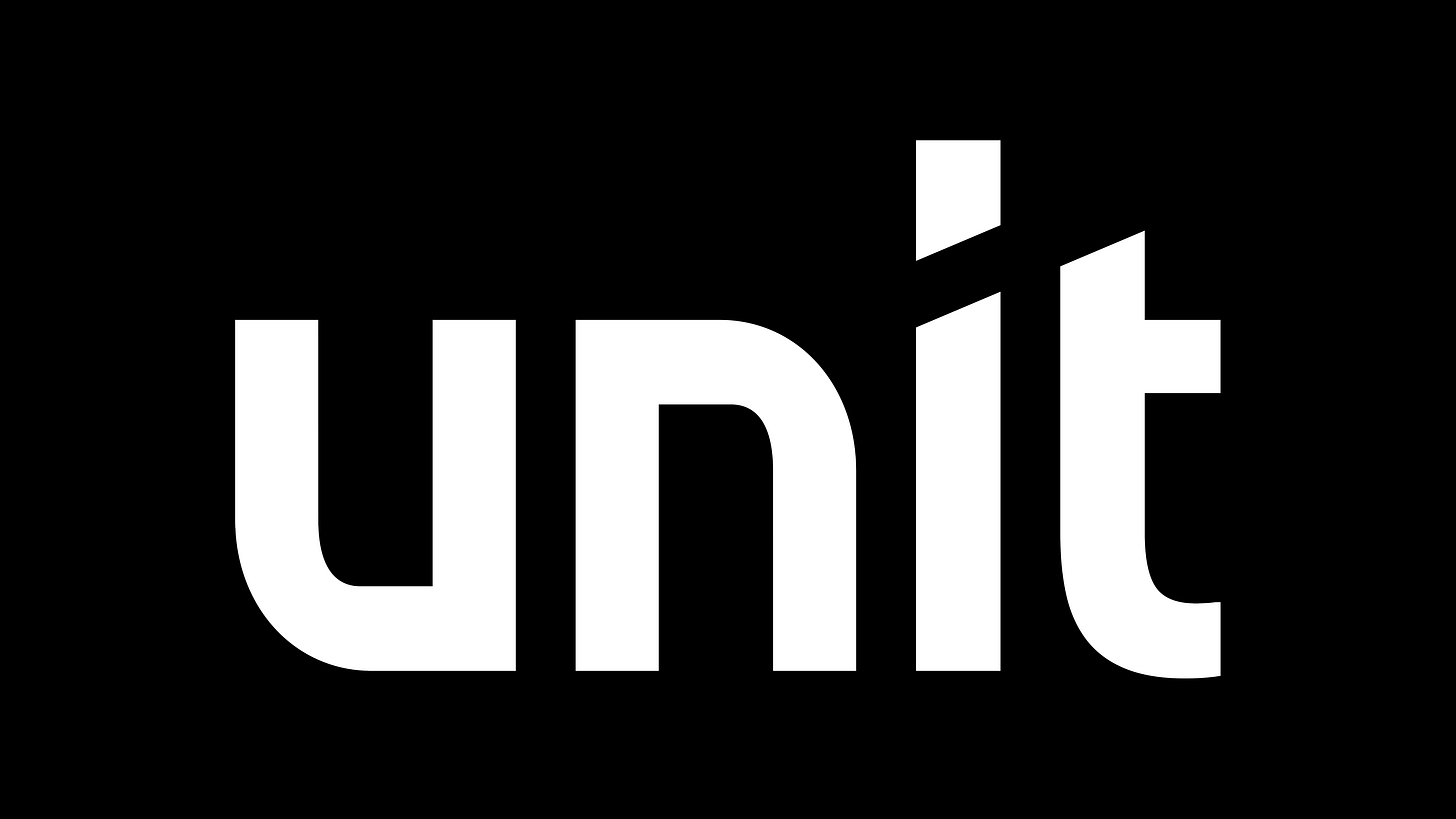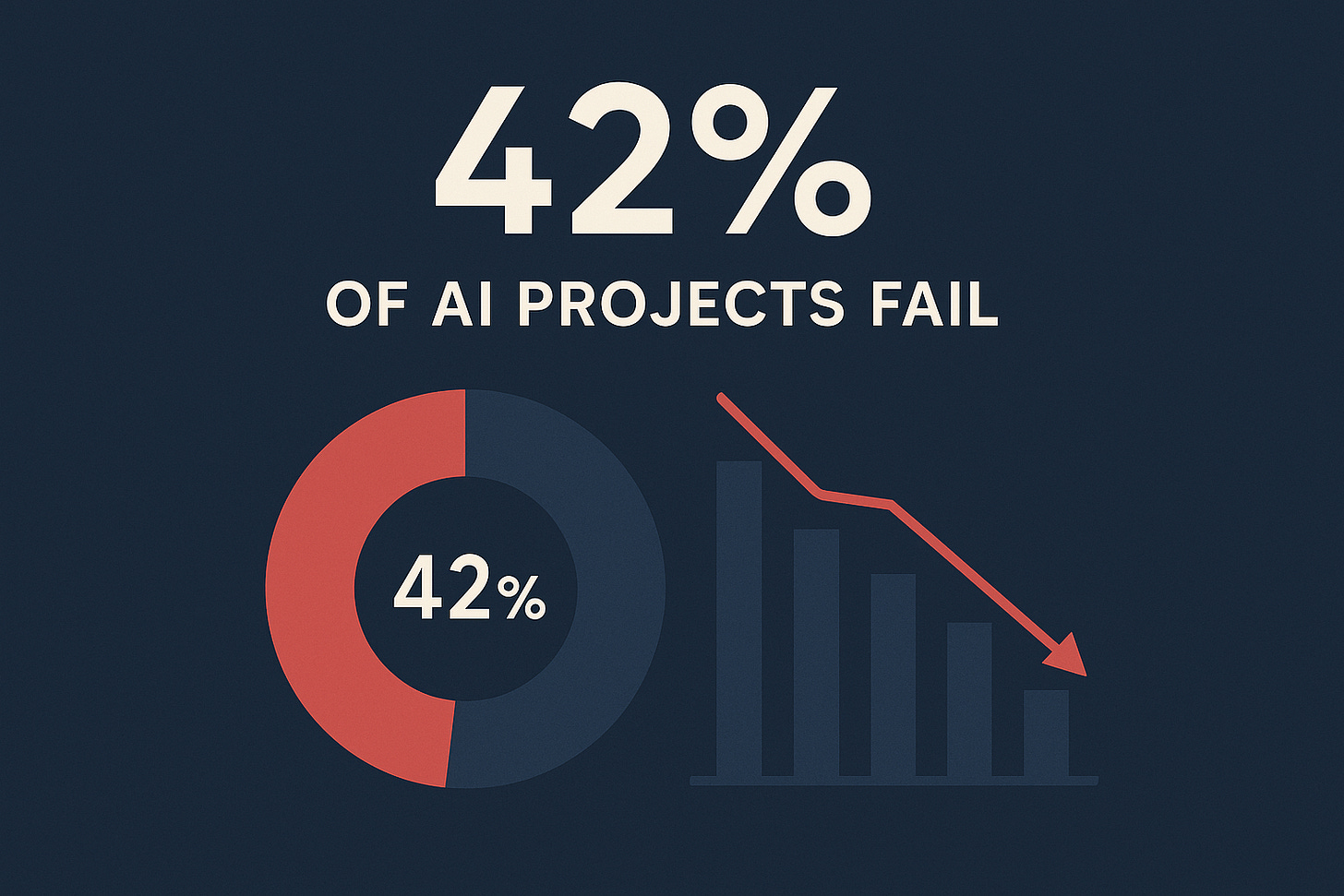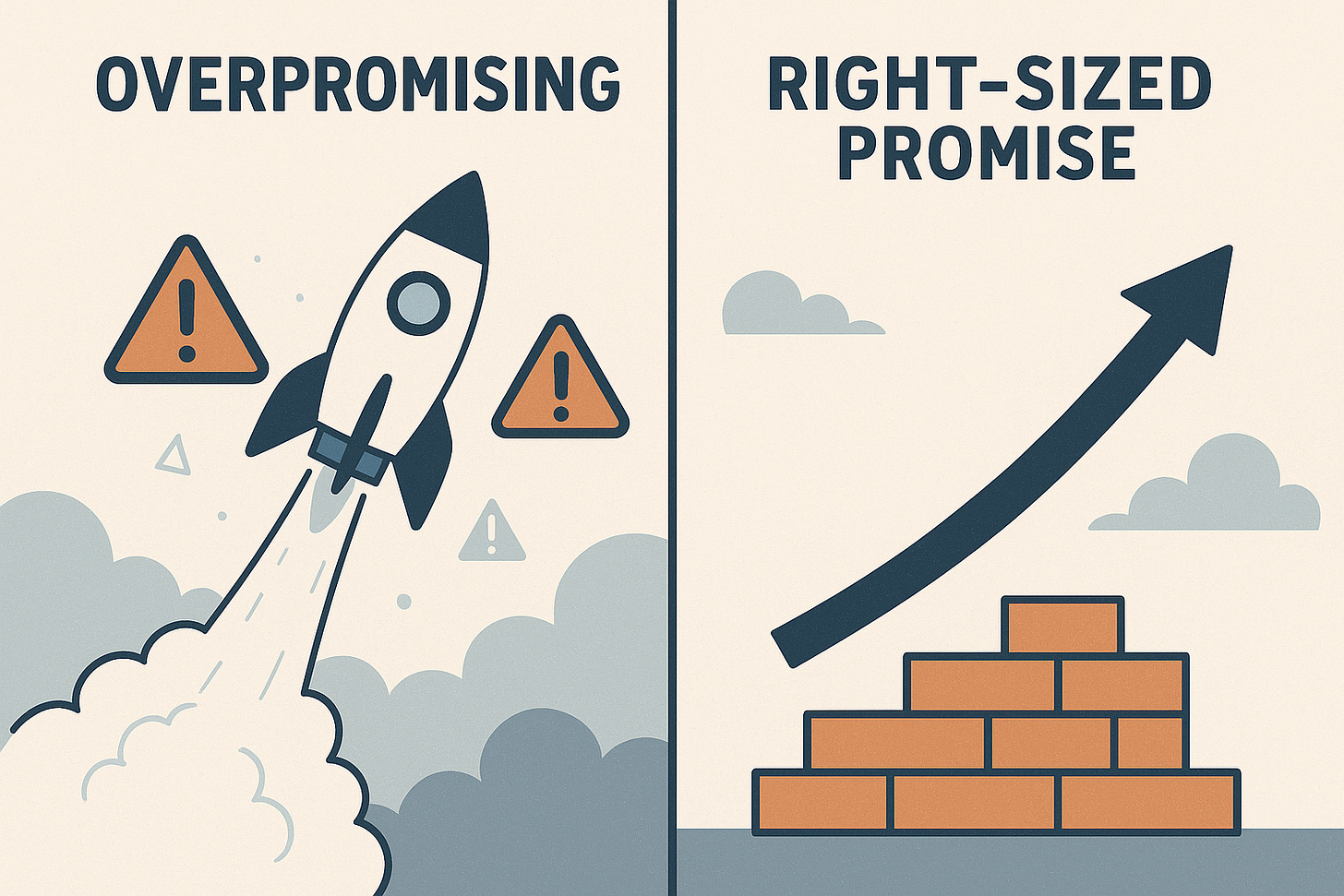Linear #148: Stop Overpromising Your AI, VERTICALS IS ALIVE, Treat Department Heads Like Pro Coaches
One vSaaS breakdown. One biz story. One 'how to'. In your inbox once a week.
Today’s newsletter is sponsored by Unit, the leading embedded finance platform for vertical SaaS.
Become the financial OS your customers rely on. With Unit’s Ready-to-Launch solutions, you can embed capital, banking, and bill pay in weeks - zero build required. Trusted by platforms like Bill.com, HoneyBook, and Homebase.
Learn more at unit.co
Alright, let’s get to it…
Stop Overpromising Your AI
The $600K lesson that saved me from becoming another statistic
VC: “This AI will revolutionize everything!”
Founder: “We’ll automate 90% of your workflows on day one!”
Customer 6 months later: “This barely works and my team hates it.”
Founder: “Well... shit.”
Sound familiar? It should. Because 42% of AI projects fail outright according to recent S&P Global Market Intelligence data — up from just 17% last year.
And I almost became one of those statistics with my first startup.
The $600K Reality Check
Back in 2016, I was running my first company. We’d built good software for trade schools — Student success prediction, automated compliance reporting, the whole nine yards. The problem was I pitched that it was perfect. That it would solve EVERYTHING for them.
“Our platform will predict student dropout risk with 95% accuracy,” I told them confidently. “We’ll automate your entire compliance workflow. Your staff can focus on teaching instead of paperwork.”
They signed a $600K ARR deal basically on the spot.
Three months later, our “95% accurate” was performing at about 40% accuracy on their real data. Our automation was breaking their existing workflows instead of improving them. Their staff was spending MORE time on paperwork, not less, because they had to constantly fix our system’s mistakes.
The deal fell apart. They churned. And I learned the most expensive lesson of my entrepreneurial career:
overpromising kills more startups
than bad technology ever will.
Why We Keep Overpromising (And Why It’s Killing Us)
Here’s the thing about AI — it’s simultaneously the most overhyped and most underdelivered technology of our generation. We’ve all seen the demos. The perfectly curated use cases. The cherry-picked success stories.
But demos aren’t production. And production is where 42% of AI projects go to die.
The average organization scraps 46% of AI proof-of-concepts before they reach production. The top obstacles? Cost, data privacy, security risks, and — here’s the kicker — unrealistic expectations set during the sales process.
We’re so eager to close deals and validate our vision that we promise transformation when we should be promising improvement. We sell revolution when we should be selling evolution.
The Right Way to Pitch AI: Vision + Early ROI
After that $600K disaster, I completely rewrote our approach. Instead of promising everything, we started with something small but valuable. Really valuable.
Here’s the framework that saved our company and eventually led to our acquisition:
Step 1: Start With One Painful, Specific Problem
Instead of “We’ll revolutionize your entire operation,” try “We’ll save your finance team 3 hours per week on compliance reporting.”
For us, that became automated attendance tracking — boring as hell, but it solved a real problem that cost schools real money every day.
Step 2: Promise Realistic, Measurable Outcomes
Our new pitch: “In month one, you’ll reduce manual attendance entry by 40%. By month three, we’ll get you to 70%. By month six, your staff will save 2 hours per day on attendance-related tasks.”
Notice what’s missing? No mention of 95% accuracy. No talk of complete automation. Just clear, achievable milestones.
Step 3: Paint the Long-term Vision. Double Down On It After Proving Value
Once we’d delivered on our initial promise, THEN we’d talk about the bigger picture: “Now that we’ve automated attendance, here’s how we can extend this to gradebook management, then student communications, then predictive analytics...”
The difference? We earned the right to dream bigger by delivering smaller.
The Compound Effect of Under-promising
This approach completely changed our trajectory. Our NPS scores went from 2 (yes, really) to 65+. Our churn rate dropped from 45% annually to under 8%. And — here’s the crazy part — our average contract values actually INCREASED.
Why? Because when you consistently deliver on your promises, customers trust you with bigger problems. They become your biggest advocates. They refer their friends.
By the time we sold to PSG in 2024, we’d achieved ~20% market share in our vertical. Not by promising everything to everyone, but by consistently delivering incremental value that compounded over time.
Three Rules for AI Value Props That Actually Work
Rule #1: Lead with the problem, not the technology
Bad: “Our advanced machine learning algorithms leverage deep neural networks to optimize business processes.”
Good: “We help your accounts payable team process invoices 3x faster with 80% accuracy.”
Rule #2: Promise the minimum viable transformation
Don’t promise to eliminate jobs. Promise to eliminate the parts of jobs people hate. Don’t promise perfect accuracy. Promise measurably better outcomes.
Rule #3: Create a path to the vision
Sell them the first step, then show them the staircase. Your customer needs to see how today’s small win becomes tomorrow’s big transformation.
The Bottom Line
AI is INCREDIBLE technology. It can automate a whole hell of a lot. But we can’t overpromise and need to focus on what it can do TODAY instead of communicating what it will do TOMORROW.
The companies that survive and thrive in the next wave won’t be the ones with the most advanced AI. They’ll be the ones that promise realistic value and deliver on it consistently.
Don’t be part of the 42%. Be part of the solution.
Start small. Deliver value. Build trust. Then — and only then — win the right to get the point where you can deliver on the vision of complete automation.
Verticals: A Weekly Biz Show On Vertical Technology & AI
Verticals: A Weekly Biz Show Presented by Parafin where a founder (aka me / Luke Sophinos) intellectually spars with a VC (Nic Poulos from Euclid VC) on all things Vertical Tech & AI. We will bring on an incredible guest every week, but not to chat about their background, to discuss playbooks, practical advice, and where the puck is heading next.
One episode with Ilir Sela (Founder & CEO of Slice) is live, next week’s will be in your inbox with a fresh newsletter on Wednesday! Go check ‘em out :-)
Oh! And kind of fun…
I bought antiantigrowthclub.com to redirect to our YouTube page.
IFYKYK
Hold You Department Heads To The Same Standards As A Professional Coach
Most SaaS company cultures are bean bags, happiness, “everything is all good” type of vibes.
For better or worse, we had the exact opposite.
I have a slightly unpopular (?) opinion — unsure why it’s unpopular to be honest…
Exec performance = Wins & Losses
Just like professional coaches.Every single department head owns one quantitative metric.
Sales owned ARR Bookings.
Customer Success owned Net Dollar Retention.
Product owned NPS.
Technology owned shipping X, Y, and Z features with <X bugs
Finance owned ensuring we don’t go $1 over the expense plan.
You can debate the one metric. These worked for us. But the important part is that they directly tie in with what the outside world is going to evaluate / value you’re business on. PS - leaders that fought me on metrics the entire financial community agreed upon was a huge red flag. I ensured this was going to be ok in the interview process.
So hopefully you get the point.
We’d all spend a solid week or two on it and the start of every quarter. We’d negotiate it, we’d push back on one another, we’d ensure we were getting to a really intellectually honest place. No sandbagging.
After it was set, every executive knew that that metric was their job security. That I would judge them for their win loss record with that metric on a quarterly basis.
0-4? Out.
1-3? On thin ice.
2-2? Not good enough.
3-1? Good work.
4-0? Let’s talk a big raise.
I’d have a public scoreboard on this. The manager would then do the same thing for all their employees. Their employees would be evaluated the exact same way. Except each employees number would add up to ~20% higher than their department goal.
Guess what? The board would then judge me on something ~20% lower than what I set with the executive team.
So now EVERY person in the company had a very clear quantitative milestone that added up to the overall companies performance. Every person was responsible for tracking it EVERY week.
Our weekly executive meetings were set up around two particular items —
Where are we in terms of this one quantitative metric
What are the problems we need to work together to solve that are putting that one metric at risk for us
You can run an entire business with this process.
It’s a beautiful symphony if you do it right.So a few questions to ask yourself:
Does the company have a quantitative north star?
Does each department leader have a quantitative quarterly goal that leads into the achievement of the company’s quantitative north star?
Does each employee have a quantitative quarterly goal that leads into the departments quantitative quarterly goal?
Does everyone get bonus’d on this and promoted/fired based on their wins and losses of said quarterly quantitative goal?
If you’re not doing all of these think about doing so.
It will change the trajectory of your business. ..
Have a product or service that would be great for our audience of vertical SaaS founders/operators/investors? Reply to this email or shoot us a note at ls@lukesophinos.com









